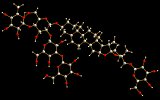The ‘Naked Scientists’ – as featured on Sciencebase – perhaps don’t deserve the alarming image their name inspires. This radio show and podcast aims to strip science down to its bare essentials and promote it to the general public, says main man Dr Chris Smith, the main aim is to “help people enjoy science as much as we do and, at the same time, to have fun,” he says.
Naked Scientists is produced at the University of Cambridge and broadcast by the BBC, and recently reached 2 million podcast downloads in the last 12 months. On top of that, the show, receives 50,000 downloads per week and has been nominated by its listeners for ‘best science show’ in the 2006 international ‘Podcast Awards’.
Each hour-long edition of the programme sees the presenters encouraging the audience to experiment in their kitchens alongside the radio show and then call in with their results. So far the series has seen listeners build home-made submarines, recreate the sound of Big Ben inside their heads, and simulate an explosion in a custard factory.
Smith, a lecturer at Cambridge, started the programme in 1999 as “ScienceWorld” and in just 7 years has made grown it into a weekly local radio show to become a national and international presence with inputs to network radio across Australia (ABC Radio National) and the UK (BBC Radio Five Live). On the Internet, its companion website www.thenakedscientists.com receives over one and a half million hits per week.
Check out the latest naked science on Sciencebase. Sciencebase now produces its very own podcast – the Geordie Boffin Podcast – an irregular and irreverent look at science from David Bradley.



